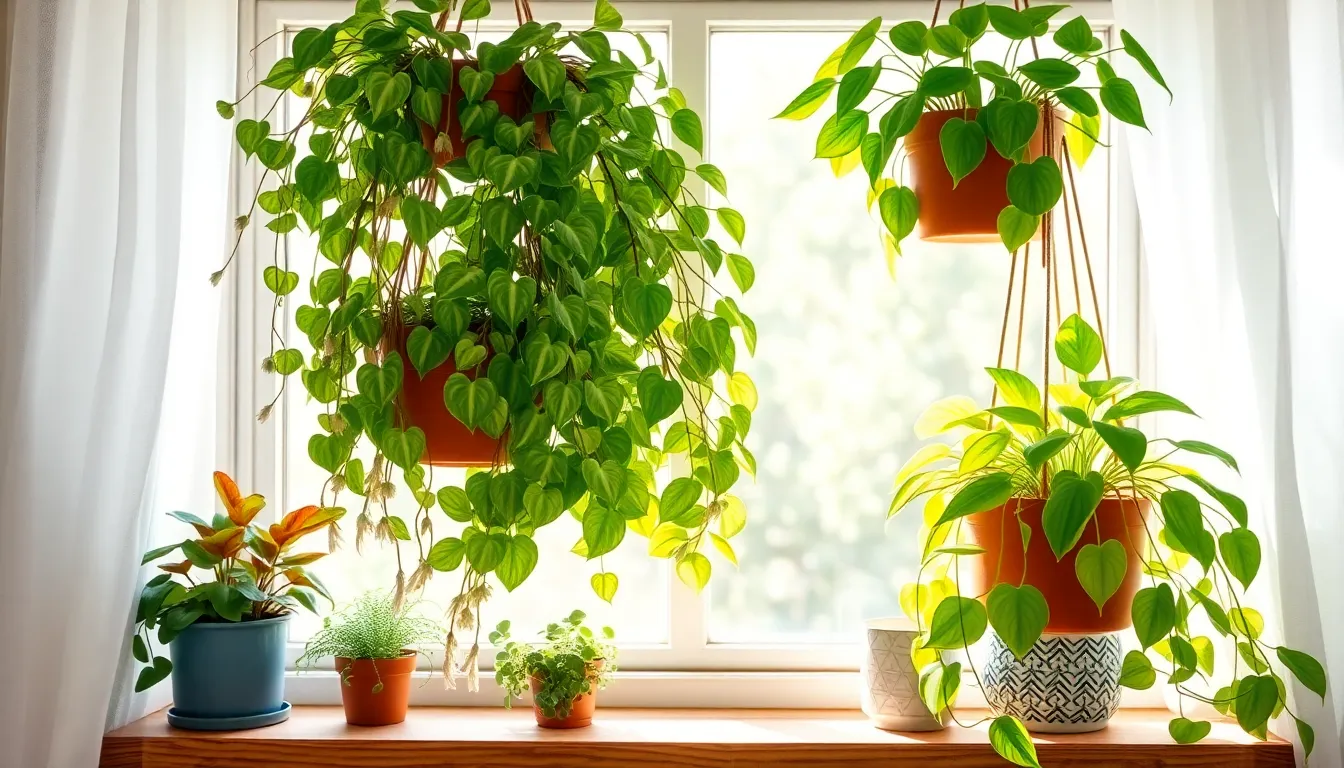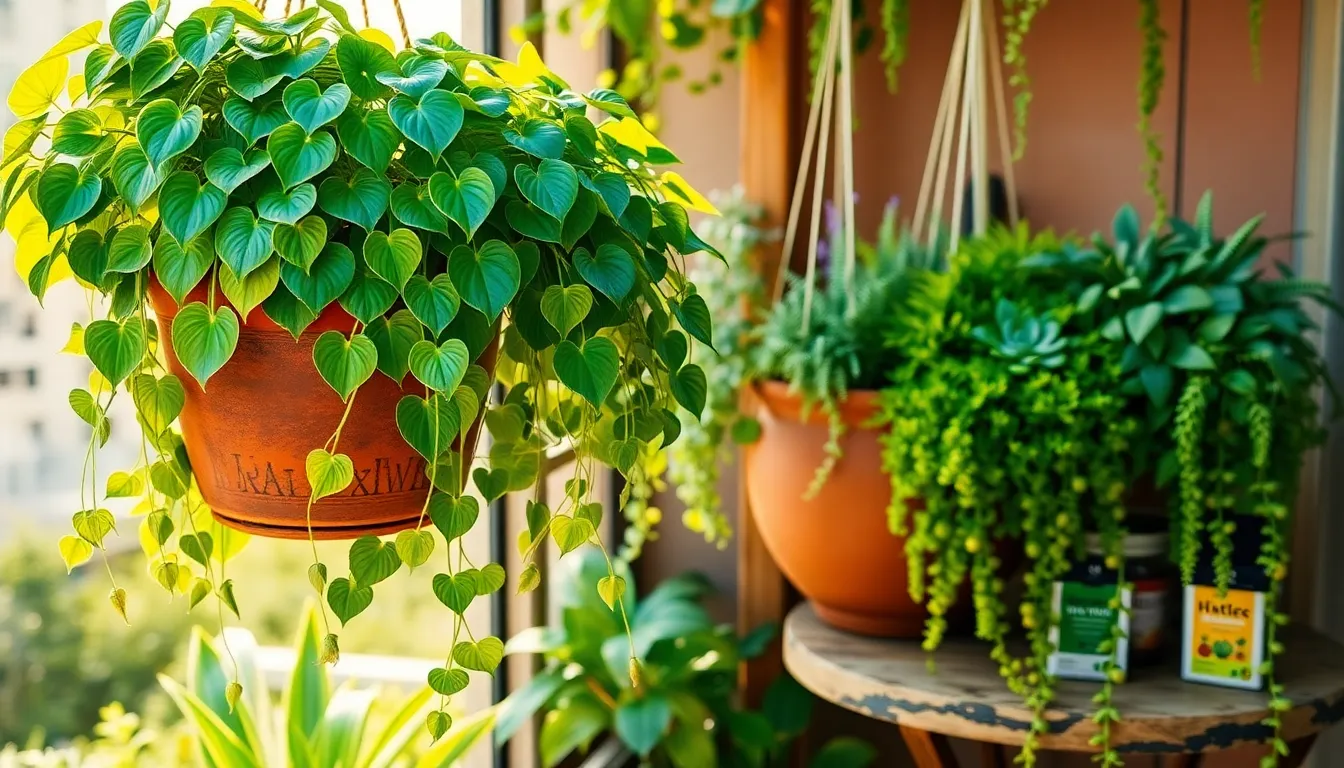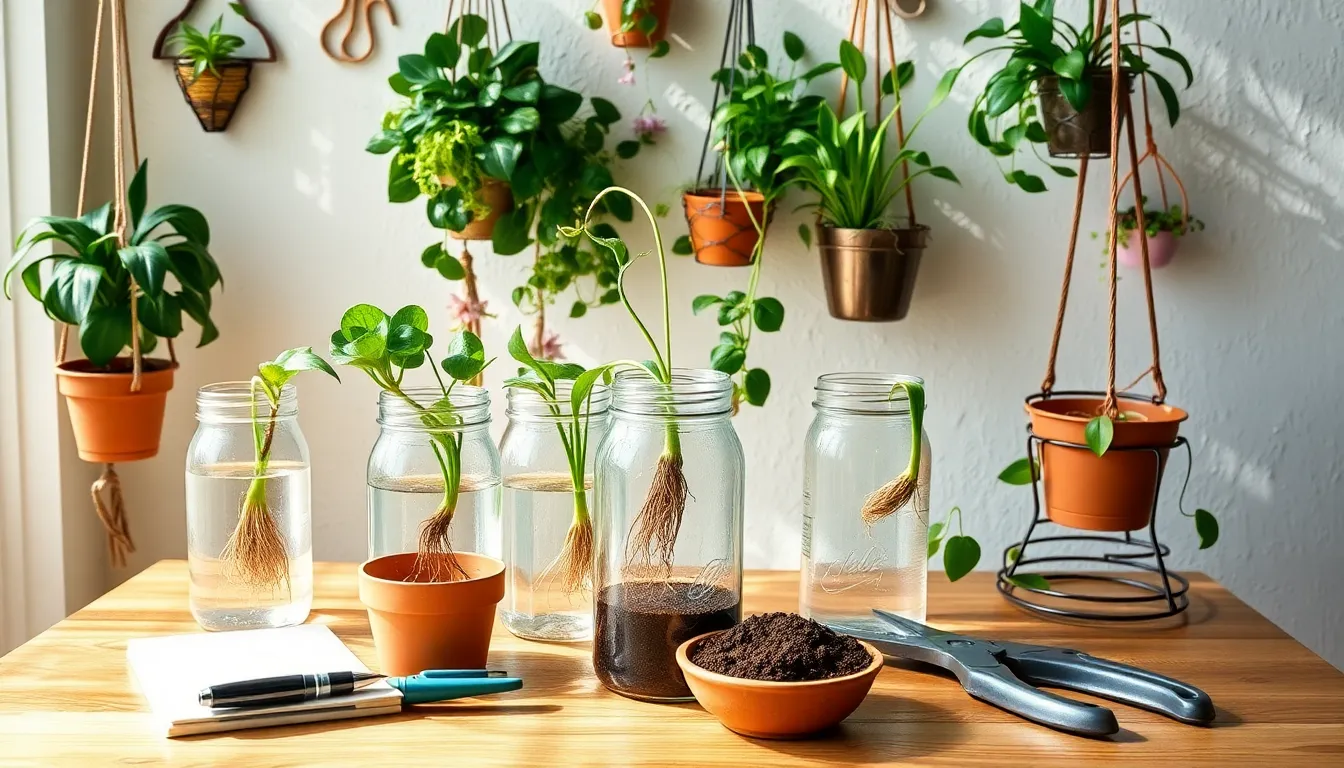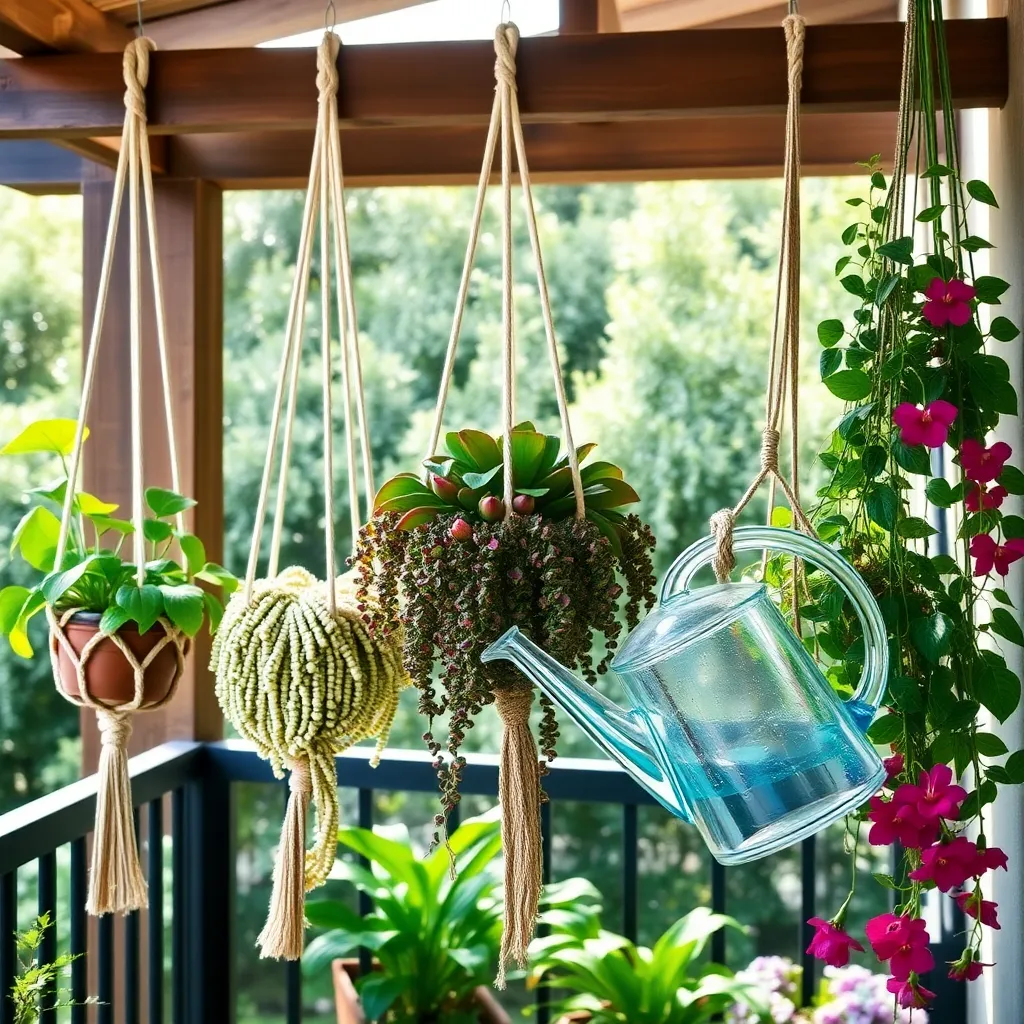Imagine gifting a piece of nature that not only enhances the aesthetic of any space but also brings a sense of tranquility and joy to its recipient. Whether you’re a budding gardener dipping your toes into the world of indoor plants or a seasoned green thumb looking to expand your leafy repertoire, our guide to the “Top 10 Gift-Worthy Hanging Plant Ideas” is your ticket to creating unforgettable, living presents that delight and inspire.
These carefully chosen hanging plants are more than just decorative additions; they are companions that purify the air, uplift moods, and effortlessly transform any corner into a vibrant oasis. As you explore this list, you’ll discover practical tips and nurturing techniques that guarantee success, boosting your confidence and ensuring your gifted greenery thrives in its new home. Let’s embark on this plant-filled journey together, and cultivate not just beautiful spaces, but also the rewarding joy of successful gardening.
String of Pearls (Succulent Elegance for Indoor Spaces)
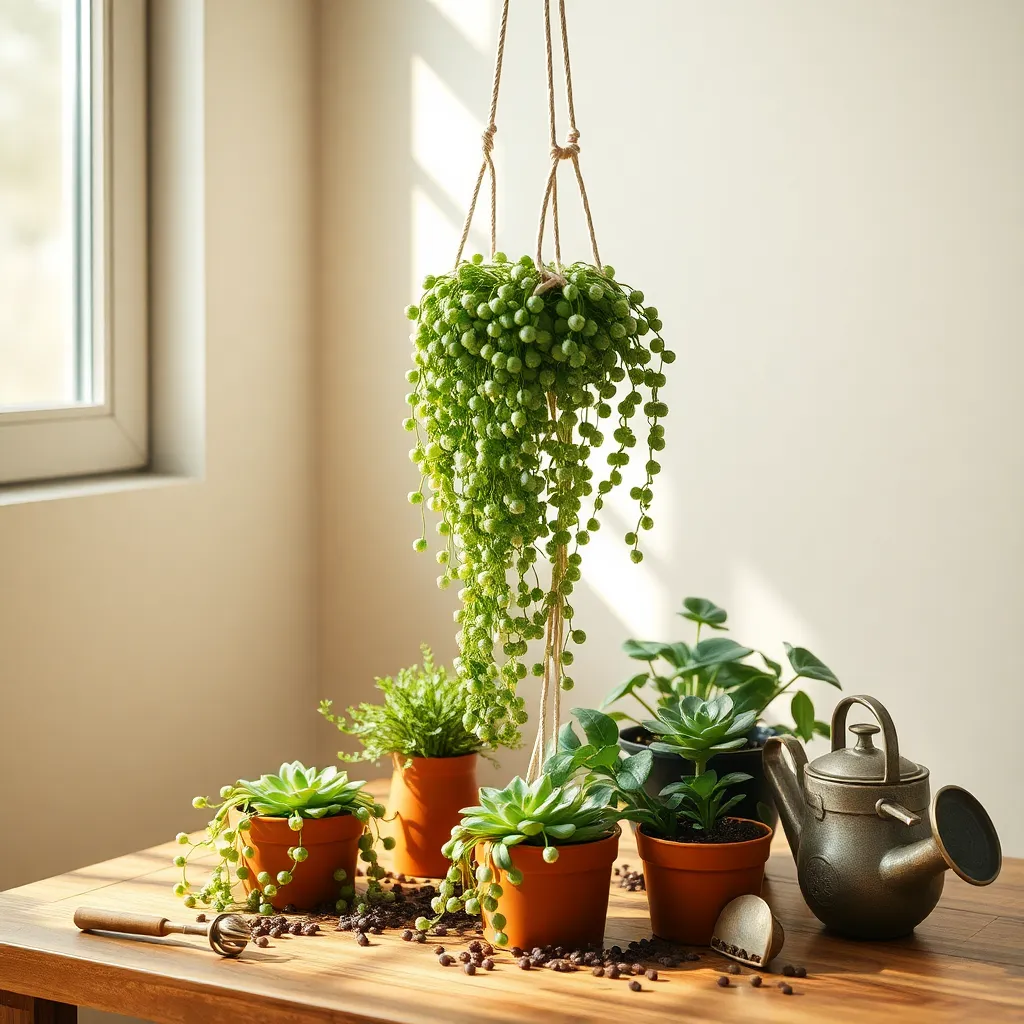
String of Pearls (Senecio rowleyanus) is a captivating succulent that adds elegance to any indoor space with its cascading strands of bead-like foliage. This plant is not only visually appealing but also relatively low-maintenance, making it an ideal gift for both novice and seasoned gardeners.
For optimal growth, place your String of Pearls in a spot where it can enjoy bright, indirect sunlight. Direct sun exposure can scorch its delicate leaves, so a windowsill that receives filtered light or a spot near a bright window is perfect.
Watering is a critical aspect of caring for this succulent, as overwatering is a common mistake. Allow the soil to dry completely between waterings, and when you do water, ensure it’s thorough but infrequent to mimic the plant’s natural arid environment.
Using a well-draining soil mix is essential for preventing root rot. A cactus or succulent potting mix is recommended, and for those looking to create their own, combine regular potting soil with sand or perlite for enhanced drainage.
- Check soil moisture by inserting a finger about an inch deep—water only if it feels dry.
- Consider a hanging planter to showcase its trailing vines and allow for maximum light exposure.
- In winter, reduce watering frequency as the plant’s growth slows down.
Boston Fern (Lush Greenery with Air-Purifying Benefits)
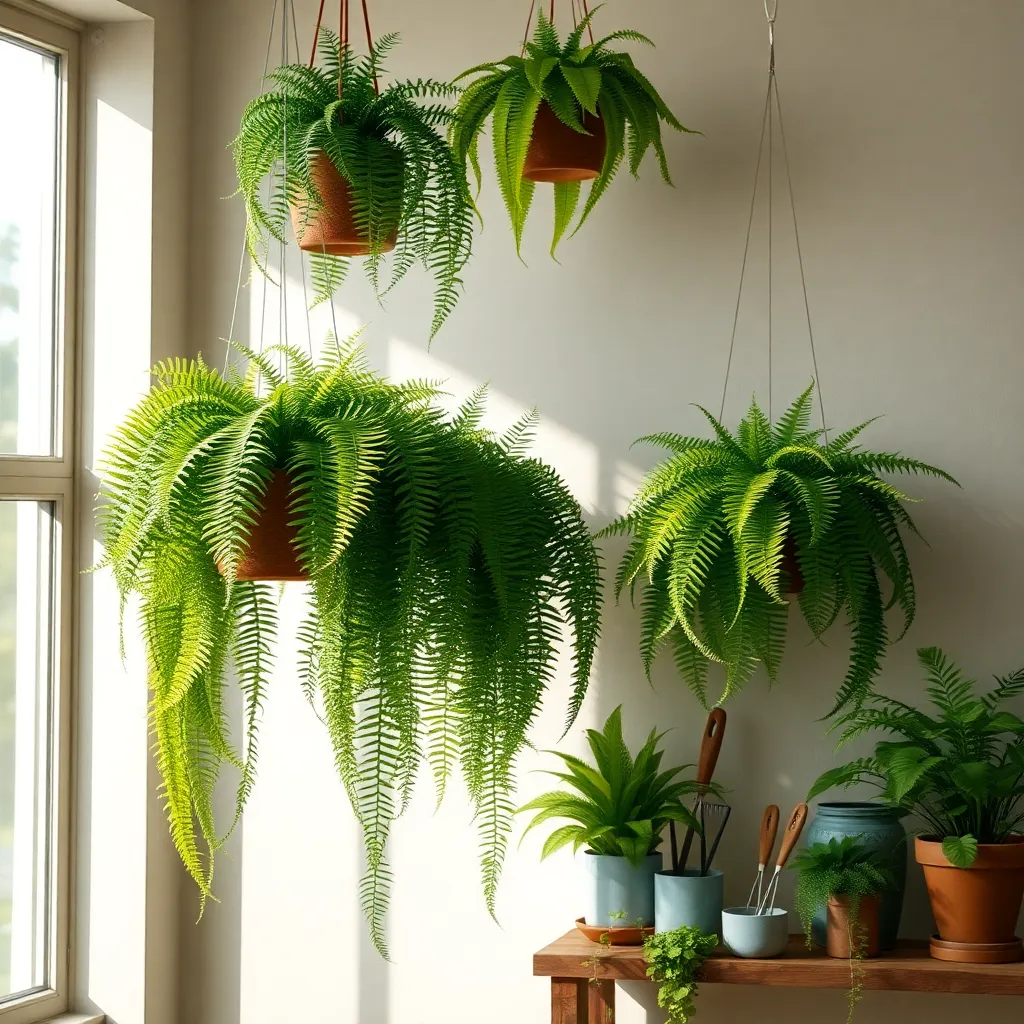
Boston Ferns are a classic choice for hanging plant enthusiasts, known for their lush, green foliage that adds a vibrant touch to any space. As a bonus, they are excellent air purifiers, making them not only beautiful but beneficial for improving indoor air quality.
To thrive, Boston Ferns prefer indirect light and a humid environment, which mimics their natural tropical habitat. To maintain the right humidity, consider misting the leaves regularly or placing a humidifier nearby, especially in dry indoor conditions.
Watering is crucial for Boston Ferns; they like consistently moist soil without being waterlogged. Use a well-draining potting mix, such as one containing peat moss and perlite, and check the top inch of soil to ensure it’s slightly damp before watering.
Advanced gardeners can enhance the growth of their Boston Ferns by using a balanced, water-soluble fertilizer once a month during the growing season. Pruning is also beneficial; remove any brown or yellow fronds to encourage new growth and maintain the plant’s lush appearance.
Spider Plant (Resilient and Child-Friendly)
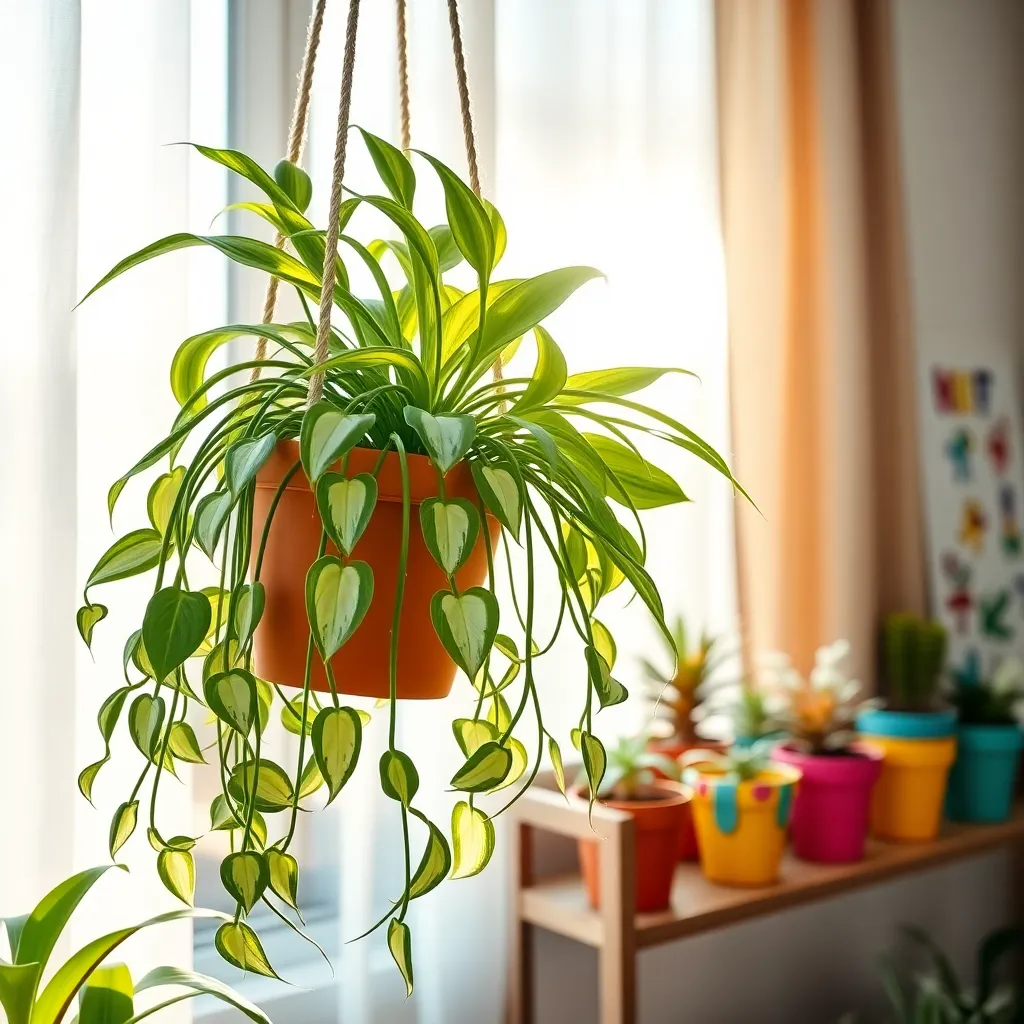
Known for their hardiness, spider plants are an excellent choice for both novice and seasoned gardeners. They thrive in a variety of conditions, making them perfect for those who might be unsure about their green thumb.
Spider plants prefer bright, indirect sunlight, but they can also tolerate low light conditions. This makes them suitable for hanging in various indoor spaces, from living rooms to bathrooms.
Water your spider plant moderately, allowing the soil to dry out slightly between waterings to prevent root rot. A good practice is to water them once a week or when the top inch of soil feels dry to the touch.
For optimal growth, use a well-draining potting mix and consider adding perlite or pumice to improve aeration. Fertilizing your spider plant every month during the growing season with a balanced liquid fertilizer can enhance its health and vigor.
Spider plants are not only resilient but also non-toxic, making them a fantastic choice for homes with children and pets. As they mature, you’ll notice ‘spiderettes’—small offshoots—hanging from the mother plant, which can be easily propagated to create new plants for gifting or expanding your collection.
Hoya Carnosa (Wax Plant with Fragrant Blooms)
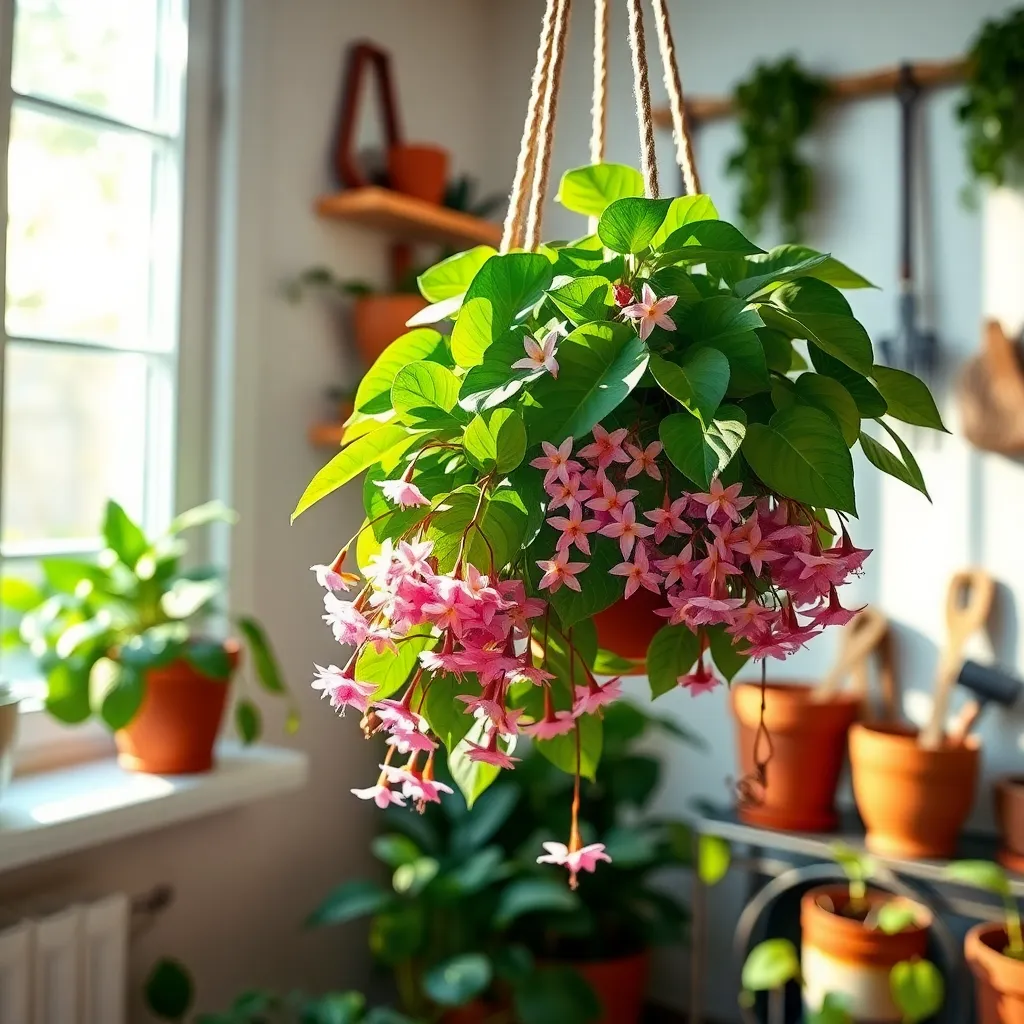
The Hoya Carnosa, often called the Wax Plant, is renowned for its charming, fragrant blooms and attractive foliage. Its trailing vines make it an excellent candidate for hanging baskets, adding a touch of elegance to any space.
To thrive, the Hoya Carnosa prefers bright, indirect light, making it ideal for hanging near a window with filtered sunlight. If you notice fewer blooms, consider relocating your plant to a slightly sunnier spot, as this can encourage flowering.
When it comes to watering, allow the top inch of soil to dry out before rehydrating, as Hoyas are susceptible to root rot from over-watering. Using a well-draining potting mix, such as a blend of cactus soil and orchid bark, can help maintain the right moisture balance.
For those looking to take their Hoya care to the next level, feeding with a balanced, water-soluble fertilizer every two months during the growing season can promote lush growth and abundant blooms. Additionally, training the vines around a support or trellis not only helps manage their growth but also optimizes exposure to light.
Trailing Pothos (Low-Maintenance Vines for Beginners)

Trailing Pothos, often referred to as Devil’s Ivy, is an ideal choice for beginners looking for a low-maintenance, visually appealing plant. These lush vines thrive in a range of lighting conditions, making them perfect for various indoor environments.
To cultivate Trailing Pothos, place them in well-draining soil, such as a mix of peat moss, pine bark, and perlite. Consistency in watering is key; allow the top inch of soil to dry out before re-watering to prevent root rot.
While Pothos are forgiving with light, they flourish best in indirect sunlight. If you notice the leaves losing their vibrant color, try moving the plant closer to a light source to enhance its variegation.
For those interested in propagation, Pothos can be easily multiplied by cutting a stem below a node and placing it in water. After a few weeks, roots will develop, allowing you to plant it in soil and expand your collection effortlessly.
Air Plant Cradle (Minimalist Display with No Soil Needed)
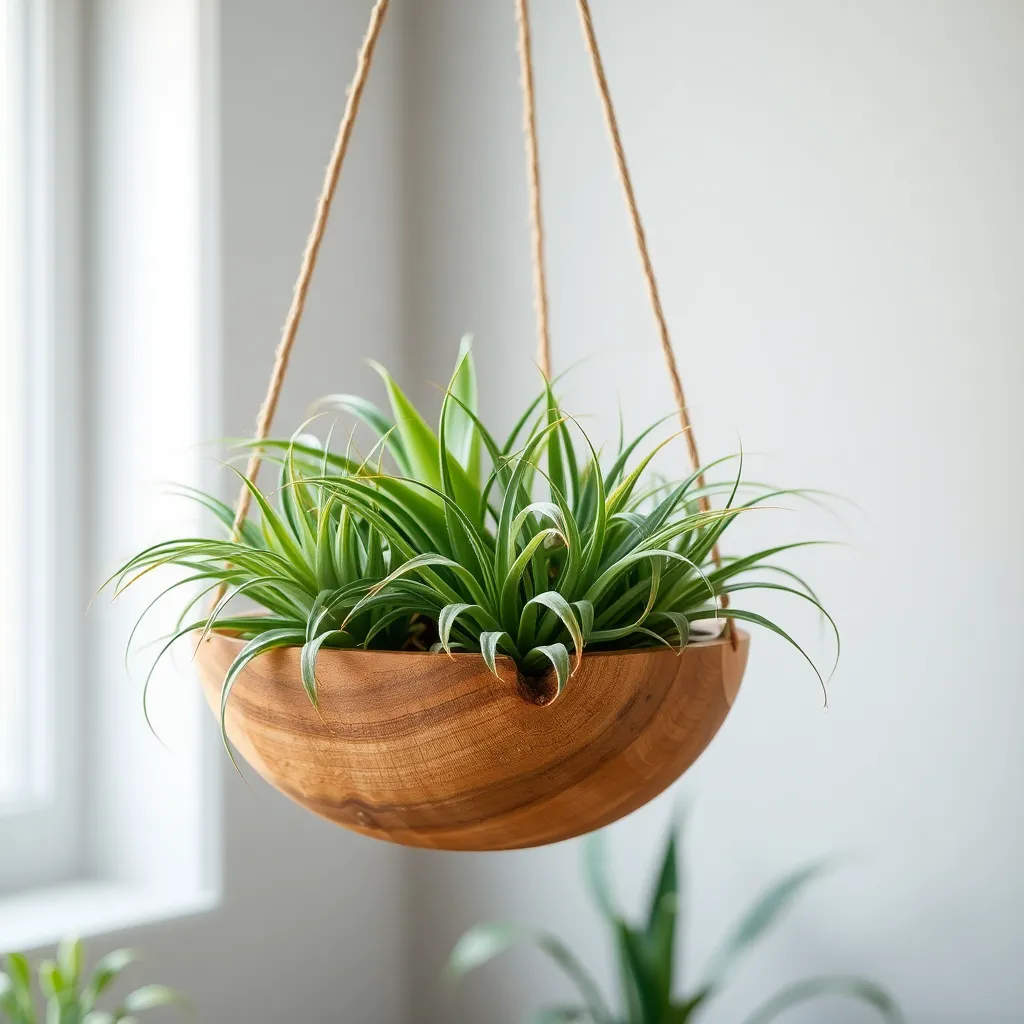
Air plants, or Tillandsias, are perfect for a minimalist display as they require no soil, making them an excellent gift for plant enthusiasts. These unique plants absorb moisture and nutrients through their leaves, thriving in bright, indirect light and well-ventilated spaces.
To care for air plants, you should soak them in water for about 20-30 minutes every one to two weeks, depending on the humidity of your environment. After soaking, ensure the plants dry completely by placing them upside down on a towel to prevent water from accumulating in their base, which can lead to rot.
Creating an air plant cradle is an easy DIY project that can beautifully showcase these unique plants. Use materials like wire, driftwood, or macramé to craft a cradle that holds your air plant securely while allowing air circulation around it.
For those looking to enhance their air plant display, consider mounting them on a piece of cork bark or within a geometric holder for a modern touch. Advanced gardeners might experiment with incorporating air plants into vertical gardens or terrariums for a striking visual effect.
Macramé Plant Hanger (Boho-Chic Style for Any Décor)
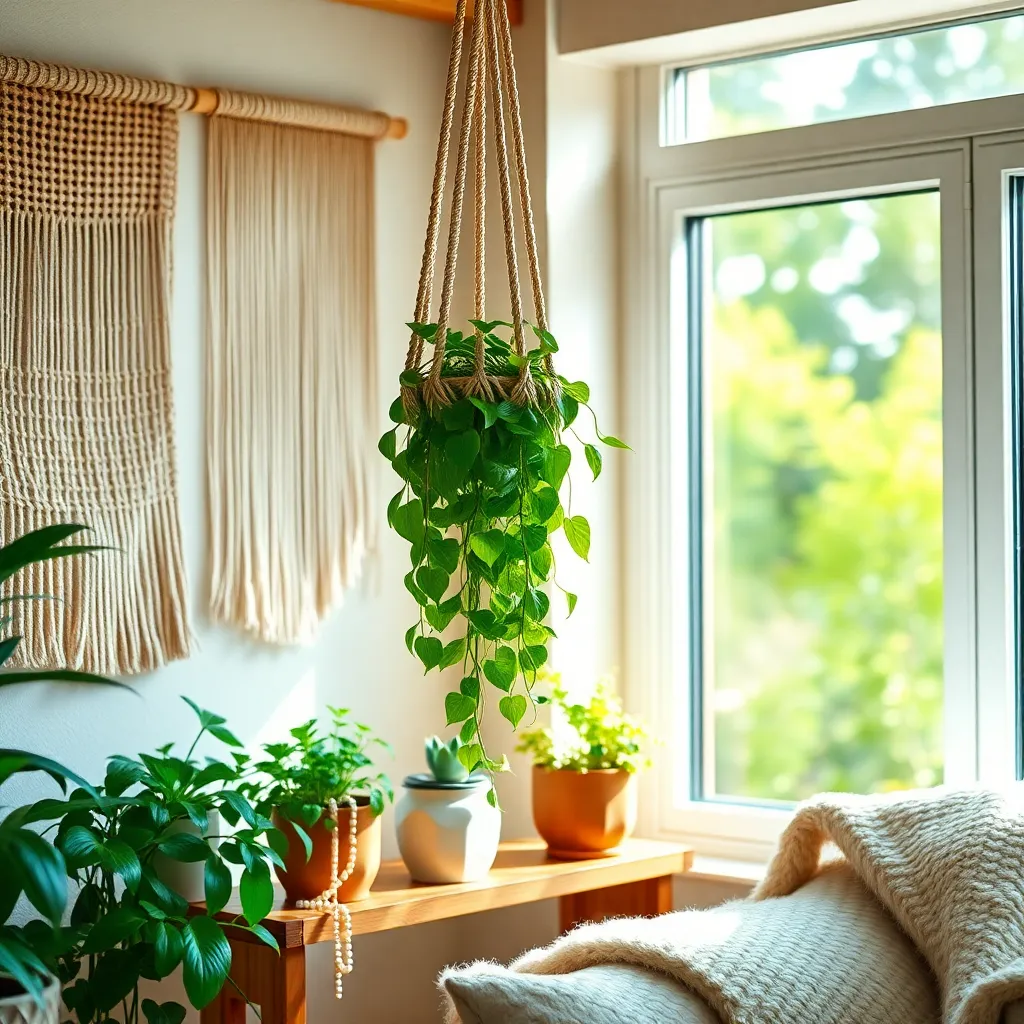
Macramé plant hangers bring a touch of boho-chic style to any home, making them the perfect gift for a plant lover. These versatile hangers can accommodate a variety of plants, from lush ferns to trailing pothos, and add an elegant, natural touch to your decor.
When choosing a plant for your macramé hanger, consider plants that thrive in indirect light, such as the Philodendron or Spider Plant. Both plants are known for their resilience and adaptability, making them ideal for beginners.
Watering needs are crucial to keep these hanging plants thriving. Ensure that the soil is well-draining by using a mixture of potting soil and perlite, and water when the top inch feels dry to the touch.
For advanced gardeners, experimenting with different plant combinations in one hanger can create a stunning visual display. Consider pairing a trailing plant like the String of Pearls with an upright plant such as the Snake Plant for varied textures and interest.
Fuchsia Hanging Basket (Vibrant Blooms for Shaded Areas)
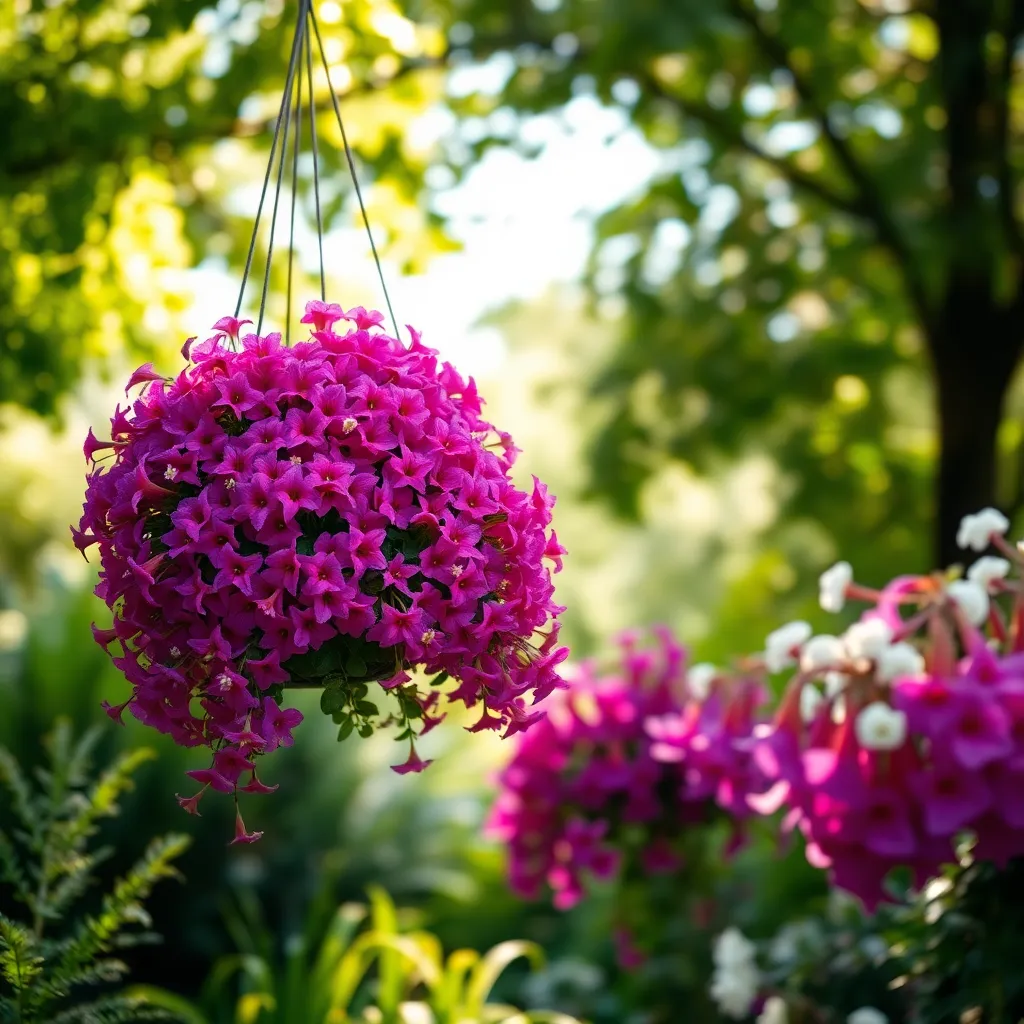
Fuchsia hanging baskets are a vibrant addition to any shaded area, offering a cascade of colorful blooms that brighten up dim corners. These plants thrive in partial to full shade, making them perfect for spaces that don’t receive direct sunlight but still need a splash of color.
To ensure your fuchsia thrives, plant it in a well-draining potting mix enriched with organic matter. Regular watering is essential; keep the soil consistently moist but not waterlogged, as fuchsias are sensitive to both drought and overwatering.
For best results, feed your fuchsia every two weeks during the growing season with a balanced liquid fertilizer. Pruning spent flowers encourages more blooms, so regularly deadhead to maintain its vibrant appearance and support prolonged flowering.
Advanced gardeners might consider overwintering fuchsias by trimming back the plant and placing it in a cool, frost-free location. This technique allows for a head start in the next growing season, ensuring a lush and blooming basket year after year.
Orchid Planter with Hooks (Exotic Beauty with Easy Mounting)
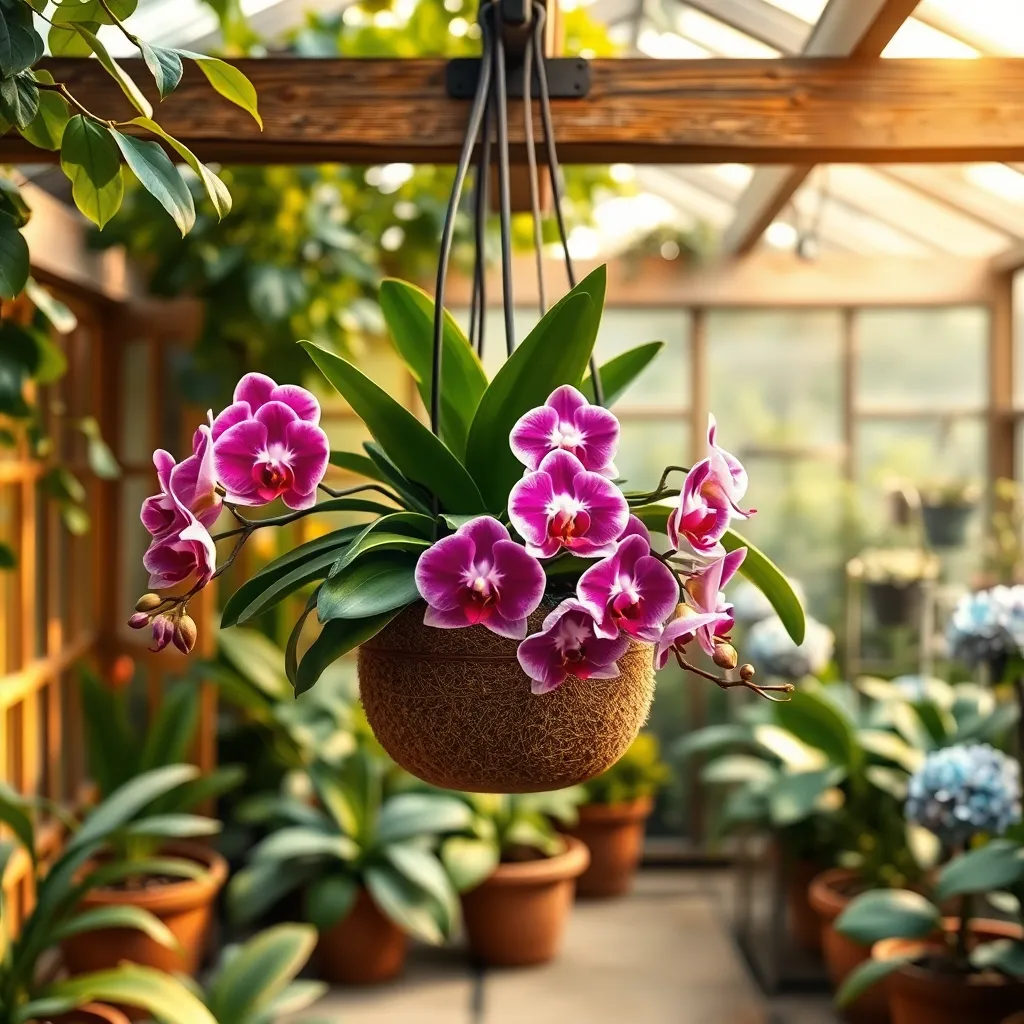
Orchids can transform any space with their exotic beauty, and an orchid planter with hooks offers a stylish way to display them. This setup allows you to easily mount orchids vertically, creating a stunning display that mimics their natural growing conditions.
When growing orchids, it’s crucial to use a well-draining medium such as bark or sphagnum moss to prevent root rot. Ensure the planter has good air circulation by placing it in a location with indirect sunlight, mimicking the dappled light of their native forest habitats.
Watering orchids requires a delicate balance; they need to be watered thoroughly but allowed to dry out between waterings. Typically, watering once a week is sufficient, but in drier environments, slight adjustments might be necessary.
Fertilizing orchids monthly with a balanced, water-soluble fertilizer can support healthy growth and vibrant blooms. For more experienced gardeners, consider experimenting with feeding orchids with diluted solutions of a specific orchid fertilizer to encourage flowering.
Herb Garden Kit for Hanging (Culinary Delight in Compact Form)
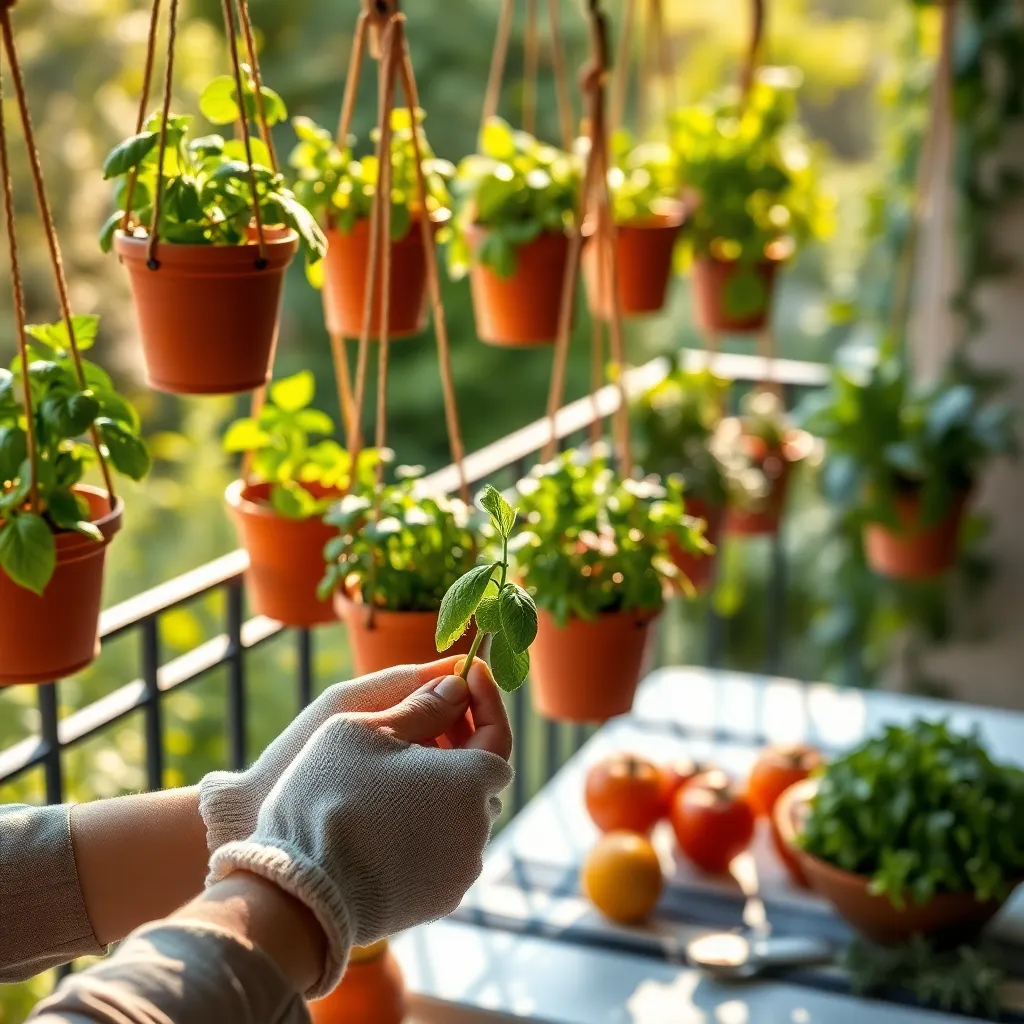
Transform your kitchen into a culinary oasis with a Herb Garden Kit for Hanging, perfect for both small spaces and seasoned chefs. These kits usually come with a selection of popular herbs like basil, thyme, and parsley, all contained in compact, well-draining pots suitable for hanging.
When setting up your herb garden, choose a location with at least six hours of sunlight per day, such as a bright kitchen window or a sun-drenched balcony. Ensure the soil is a light, well-draining mix—a combination of potting soil and perlite works well to prevent root rot.
Watering is crucial; herbs prefer consistent moisture but dislike being waterlogged, so water when the top inch of soil feels dry to the touch. For those looking to enhance their herbs’ flavors, consider using a diluted liquid fertilizer every four weeks to encourage lush growth and rich flavors.
Experienced gardeners might explore companion planting within their hanging herb garden. For instance, pairing basil with tomatoes in the same pot can enhance growth and flavor for both plants, creating a mini ecosystem right in your kitchen.
Conclusion: Growing Success with These Plants
In exploring the world of gift-worthy hanging plants, we’ve uncovered ten delightful greenery options that can nurture and symbolize the growth in your relationships. From the resilient Pothos, representing adaptability, to the delicate String of Pearls, epitomizing the beauty of individuality, each plant offers a unique opportunity to communicate love and appreciation. We’ve touched on how the elegance of the Boston Fern can symbolize trust, while the playful Spider Plant brings joy and spontaneity. The lushness of the English Ivy speaks to loyalty, and the vibrant Blooming Begonia stands for passion and excitement. We’ve also seen the calming influence of the Peace Lily, the enduring strength of the Heartleaf Philodendron, the gentle allure of the Maidenhair Fern, and the nurturing spirit of the Bird’s Nest Fern.
As a next step, consider gifting one of these plants to someone special, sparking new conversations and deepening your connection. Remember to save this article for future reference, ensuring you always have access to these thoughtful insights. By nurturing your relationships with intention and creativity, you’re paving the way for lasting success. Embrace the growth, and let these green companions inspire flourishing connections.

